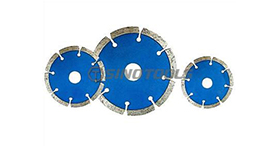China Circular Saw Blades supplier shares this article with you.
Saw blade diameter selection:
The diameter of the saw blade is related to the sawing equipment used and the thickness of the sawing workpiece. The diameter of the saw blade is small, and the cutting speed is relatively low; the large diameter of the saw blade has higher requirements on the saw blade and sawing equipment, and the cutting efficiency is also high. The outer diameter of the saw blade is selected according to different circular saw machine models, and the use of a saw blade with the same diameter can effectively improve efficiency and reduce production costs.
Selection of saw blade tooth number:
The number of teeth of a sawtooth, generally speaking, the more cutting edges are cut per unit time, the better the cutting performance. However, the number of teeth should not be too many, and a reasonable number of teeth should be selected according to the thickness of the material to be sawed. The sawing material is thick, the number of teeth is correspondingly small, the sawing material is thin, and the number of teeth is relatively large, but the saw teeth are too dense, and the chip volume between the teeth becomes smaller, causing jamming, which is easy to cause the saw blade to heat up; If the amount is not matched properly, the cutting amount of each tooth is small, which will increase the friction between the cutting edge and the workpiece and affect the service life of the cutting edge. Usually, the tooth spacing is about 15-25mm.

Circular Saw Blade
Selection of saw blade thickness:
The thickness of the circular saw blade theoretically we hope that the thinner the saw blade, the better, the sawing is actually a consumption. The material of the alloy saw blade base and the process of manufacturing the saw blade determine the thickness of the saw blade. If the thickness is too thin, the saw blade is easy to shake when working, which affects the cutting effect. When choosing the thickness of the saw blade, the stability of the saw blade and the material to be cut should be considered. The thickness required for some special-purpose materials is also specific, and a reasonable thickness should be selected according to the requirements of equipment and workpiece processing.
Can the circular saw blade be reversed when in use?
Can the circular saw blade be reversed when it is in use? Many saw blade users are very random about the installation direction of the saw blade. When the saw blade is disassembled and reinstalled, it does not pay attention to the forward and reverse rotation direction of the saw blade, which reduces the use of the saw blade. life.
Generally speaking, new saw blades without blades do not have forward and reverse directions, because the saw blade mainly depends on the blade to work later. However, the used saw blade should not be reversed as much as possible after unloading and reinstalling.
Because the saw blade is already out of the blade at this time, a regular extension line is dragged behind it to ensure the sharpness during use and also extend the service life of the saw blade.
Now there are some saw blades with sharpened edges on the market. These saw blades have a good appearance. Since the saw blades have been sharpened, it is better to install them in the specified direction during use. However, it is worth noting that this kind of edged saw blade is generally processed by a grinding wheel, and a certain amount has been lost during processing. Therefore, this saw blade improves the use efficiency and reduces the service life of the saw blade.
In short, in the general situation where there is no requirement for very precise cutting, it is a wise choice to choose a saw blade without a blade.
没有评论:
发表评论